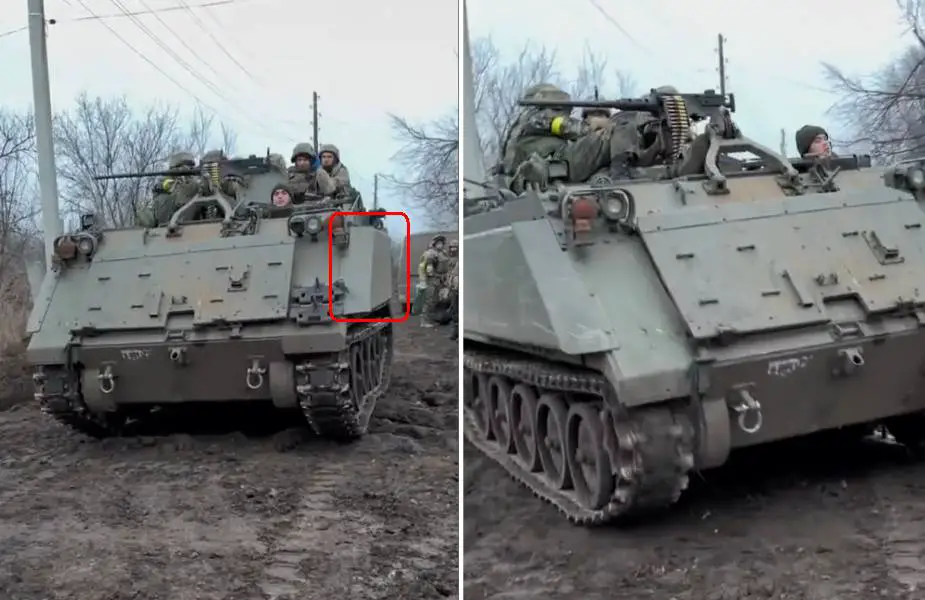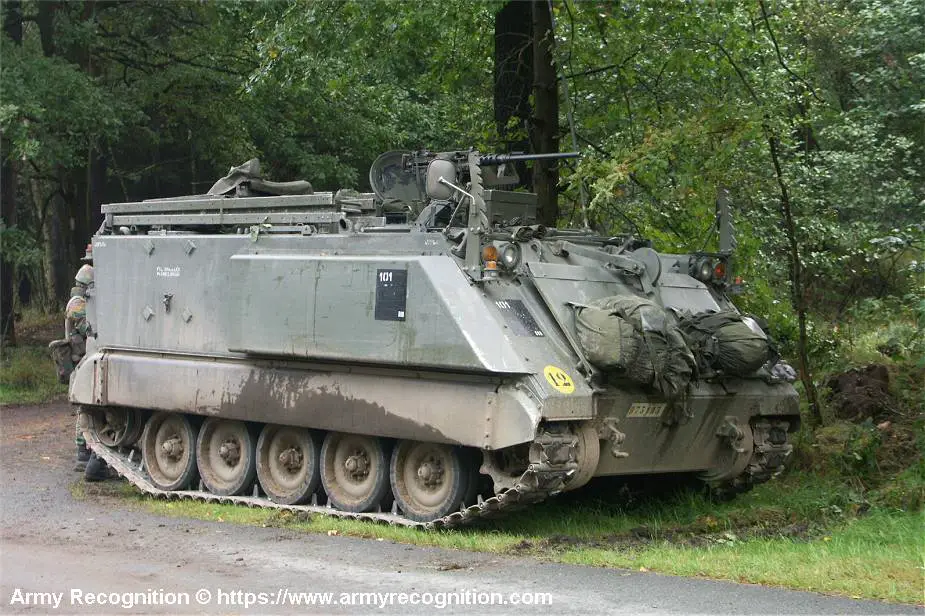Breaking news
Ukraine army uses former Belgian army M113 armored vehicles delivered by British company.
According to a video published by the "Ukraine Weapons Tracker", the Ukrainian army is now equipped with M113A1 tracked APCs (Armored Personnel Carriers) that were formerly in service with the Belgian army. In fact, the M113 shown in the video has a unique design that was only used by the Belgian army. According to information found online, Belgium purchased M113 APCs (Armored Personnel Carriers) through a British company that delivered them to Ukraine.
Follow Army Recognition on Google News at this link

Former Belgian army M113 tracked armored vehicles are now in service with the Ukrainian armed forces. (Picture source video footage published on Ukraine Weapons Tracker Twitter)
In April 1980, the Belgian government placed an order for 514 of the then FMC (now United Defense LP) Armored Infantry Fighting Vehicles and 525 M113A1 armored personnel carriers. These were built under license by Belgian Mechanical Fabrication (BMF). This was a consortium between a private owner (the majority owner), a Belgian Bank (BBL), and Cockerill Mechanical Industries (CMI). The Aubange factory of BMF was responsible for the hulls and hull assembly while the subcontractor NV Henschel in Antwerp carried out the final assembly. The first M113 APCs entered into service with the Belgian army in 1982.
The Belgian variants of the M113A1 are very similar to the standard US Army M113A1 consisting of an all-welded aluminum armor hull providing protection against the firing of small arms and artillery shell splinters. The driver is seated at the front left side of the hull with the engine compartment on its right. The commander position is located to the rear of the engine compartment and has a cupola that can be traversed through a full 360° which is armed with one 12.7mm machine gun.
The rear part of the M113 can accommodate up to 11 infantrymen who can enter and leave the M113 via a power-operated ramp in the rear of the hull that opens downwards and has a door in the left side. Behind the commander's cupola is a rectangular cargo hatch that opens to the rear, behind which is a domed ventilator. The infantrymen travel on seats down each side of the hull, which can be folded up to enable the vehicle to be used as an ambulance or to carry cargo.
The Belgian version of the M113 was fitted with a torsion bar suspension system similar to that of the M113A2, a 200 A alternator, an exterior air intake/exhaust personnel heater, an NBC system supplying air to each individual, a Halon fixed fire extinguishing system for the engine compartment and vehicle lights for Belgian and German roads.
The M113 torsion bar suspension consists on each side of five dual rubber-tired road wheels with the drive sprocket at the front and the idler at the rear. There are no track-return rollers and the first and last road wheel stations are fitted with a hydraulic shock absorber. The vehicle is powered by a Detroit Diesel engine developing 212 hp coupled to an Allison transmission with 3 forward and 1 reverse gears. The vehicle can run at a maximum road speed of 60 km/h with a maximum cruising range of 480 km.

Engineer version of the Belgian army M113 tracked armored vehicle. (Picture source Army Recognition)


























